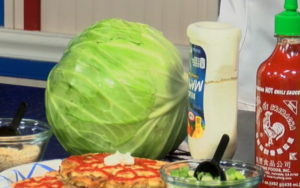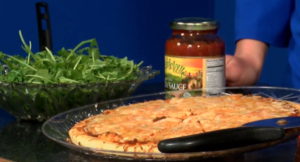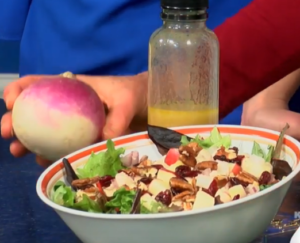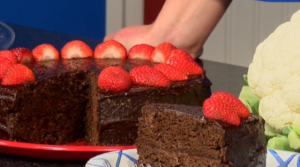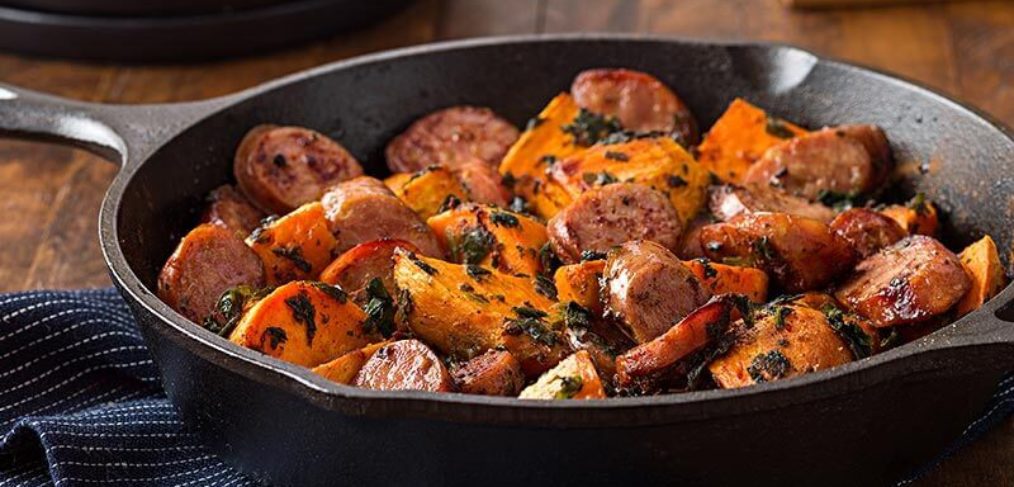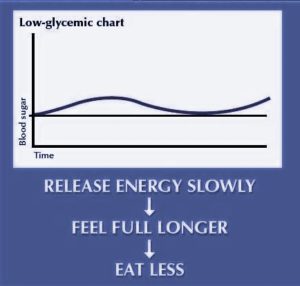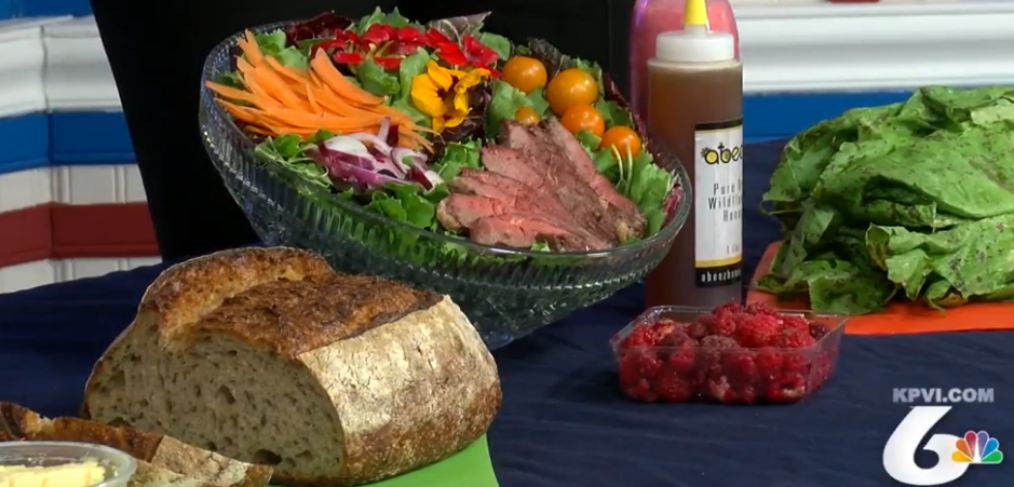With these quick meal templates, you can modify your meal according to your budget, time, and tastes. So, you will have delicious meals and optimal nutrition! Further, you can choose your meal to fit your mood, and tailor it to the seasonal foods available. Now, you can have healthy customizable meals anytime!
Customizable Meals in a Salad Bowl

Ingredients
8 oz. any cooked protein, cubed
2 c. any raw vegetables, chopped
1 Tb. any fresh herbs, minced
3 Tb. vinegar, any flavor
2 Tb. any unrefined, cold-pressed liquid oil
1 tsp. prepared mustard, any type
1 clove garlic
salt to taste
2 c. salad greens, any variety
1 c. cooked grain or legume
Instructions
In a large bowl, toss together the protein, raw vegetables and fresh herbs. Next, whisk together the vinegar, salad oil, mustard, and garlic. Pour dressing over meat and vegetable mixture. Marinate at least 1 hour, and up to 48 hours. To serve, place greens in serving bowls. Then, add grain. Finally, top with the marinated mix.
Variation: Omit the grain or legume and serve in a tortillas or pitas.
Customizable Meals In a Soup Pot
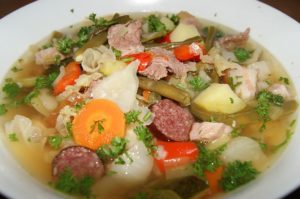
Ingredients
3 Tb. coconut oil, pastured lard, red palm oil, tallow, or ghee
1 onion, chopped
3-4 cloves garlic, minced
1 quart bone broth
12 oz. beef, pork, organ meat, seafood, poultry or tempeh
2-3 c. starchy vegetable OR 1 c. whole grain or legumes
Abundant greens –cabbage, kale, spinach, chard, bokchoy, etc.
Up to 4 c. additional vegetables: green beans, asparagus, broccoli, cauliflower, eggplant, zucchini…
salt to taste
Instructions
First, sauté the onion in fat until translucent. Second, add the onion to the remaining ingredients in a crock pot or large soup pot. Third, simmer until food is tender. Lastly, season according to one of the variations below.
Mexican: Add tomato, cumin and chilis. Serve with avocado and lime.
Indian: Spice with cinnamon, coriander, cumin, ginger, and turmeric. Serve with cilantro.
Italian: Stir in basil, oregano, rosemary, thyme & fennel. Use tomatoes generously.
Thai: Season with ginger, lemongrass, fish sauce and lime. Serve with coconut milk.
Garden: Use any fresh herbs, such as dill, savory, thyme, parsley, or marjoram.
Customizable Meals In A Skillet
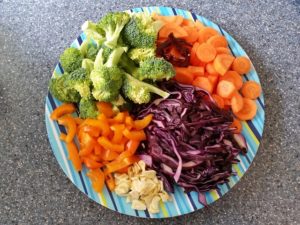
Ingredients
2 Tb. temperature-stable cooking oil
1/2 lb. cubed raw protein
1 onion, sliced
2-4 c. cut vegetables, fresh or frozen
1 c. chopped tomatoes
½ tsp. each cumin, coriander, turmeric and ginger
salt to taste
1 c. grain: rice, millet, buckwheat, quinoa…
2 c. bone broth
Instructions
In a large skillet, sauté the protein, and onion in the cooking fat. When the onion is translucent and protein is browned, add the tomatoes, spices, grain, and broth. As the final step, cover, reduce heat, and simmer until liquid is absorbed and grain is tender, 20-30 minutes.
Variation 1: For quicker meal prep, cook the grain in the broth beforehand. Store it in the fridge or freezer until needed. Then, stir-fry the rest of the meal while the grain is warming in the microwave. Serve the stir-fry on top of the rice.
Variation 2: For a more southwestern flavor, substitute chili powder, paprika, and red pepper flakes for the coriander, turmeric and ginger.
Customizable Meals Roasted or Grilled

Ingredients
1 lb. pork, beef, poultry, fish
2 Tb. coconut oil, avocado oil, ghee, tallow, or pastured lard
1 onion, chopped
Several cloves garlic, minced
2 c. root vegetables (carrots, potatoes, turnips, rutabaga, beets, parsnips)
2 c. non-starchy vegetables (green beans, asparagus, broccoli, cauliflower, Brussels sprouts, mushrooms, peppers, celery)
1 Tb. Italian seasoning OR chili, cumin and paprika
salt & pepper to taste
1 Tb. balsamic, red wine or apple cider vinegar
Instructions
Cube the meat and chop the vegetables. Then, toss these together with the cooking fat and place in a roaster pan or on skewers. Before cooking, season generously. Grill or roast in a 450°oven for 20-25 minutes, turning halfway through. When meat is cooked and vegetables are tender, remove from heat and sprinkle with vinegar.
Customizable Meals in a Slow Cooker
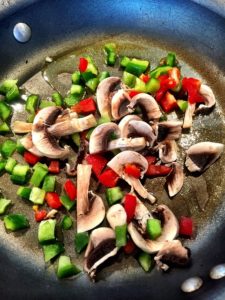
Ingredients
4 c. firm vegetable peeled and sliced (eggplant, turnips, celeriac, rutabaga, yam, squash…)
1 lb. beef, poultry, pork, seafood or tempeh
8 oz. tomato paste
2 c. bone broth
1 tsp. each dried rosemary, oregano, thyme, garlic powder, onion powder and salt
1/2 c. fresh basil, packed
2 c. additional vegetables (carrot, celery, bell peppers, spinach, zucchini, mushrooms…)
Instructions
Spread the 4 c. sliced vegetable evenly on the bottom of your crock pot. Next, lay the protein on top of the sliced vegetable. In a bowl or blender, whisk the tomato paste, broth and seasonings together. Then, chop the basil and mix into the sauce along with the 2 c. additional vegetables. Finally, pour the sauce over the meat. Cook on low for 4-6 hours
Variation: Add 1/4 lb. grated frozen liver to the sauce before pouring over the meat and vegetables.
More Customizable Meals
If you liked these recipes, find others like them in our Balanced Bowl Cookbook.








